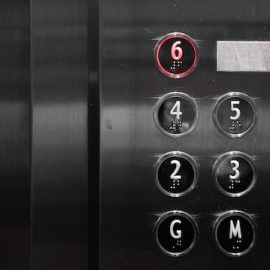

This article is an excerpt from the Shortform book guide to "Invisible Women" by Caroline Criado Perez. Shortform has the world's best summaries and analyses of books you should be reading.
Like this article? Sign up for a free trial here .
What safety issues do women face? How does the gender data gap affect women’s safety?
Caroline Criado Perez contends that the gender data gap—a lack of information about the female experience—harms women’s health, safety, and economic standing. In Invisible Women, she says that the data gap causes issues in public transport and disaster response.
Read more to learn about women’s safety issues on public transport and in a disaster.
How the Gender Data Gap Affects Women’s Safety
How does the gender data gap reinforce the male-as-default mindset? Perez writes that we can see this in the failure of society to sufficiently protect women’s safety in both daily life and in our responses to disasters.
How the Gender Data Gap Affects Women in Daily Life
To illustrate how the gender data gap causes women’s safety issues in daily life, Perez points to a ubiquitous feature of many women’s lives: public transit.
As we’ve seen, Perez argues that thanks to the gender data gap, many products work for the average man but not the average woman. The same is true of systems. Notably, many public transit systems don’t adequately protect women. Several statistics indicate that these systems aren’t equally safe for men and women because women are far more likely to be sexually harassed on public transit than men are.
But why don’t public transit systems adequately protect women? Perez believes this is because of a gender data gap that reinforces the male-as-default mindset: Women who are sexually harassed on public transit don’t report the crime.
Perez asserts that women don’t report harassment on public transit for two main reasons. First, women don’t know how to report it. Few transit systems make clear what to do if someone harasses you while you’re using their service. Second, women who do report often have poor experiences. She cites the case of one Indian woman whose bus driver kicked her off for disrupting other riders when she shouted at the man who groped her.
In this way, Perez contends public transit systems’ failures to provide adequate reporting procedures results in a gender data gap: Public transit agencies don’t have data indicating that women are less safe on public transit than men are official statistics suggest that men are more likely to be victimized in public. Moreover, the people who run these agencies are usually men, so they believe these statistics. They’ve likely never been harassed on public transit, so they don’t have the life experience that suggests these statistics might be wrong. This lack of knowledge is also a manifestation of a gender data gap.
Therefore, because the men who run public transit systems can’t see the need for measures that protect women from harassment, they don’t implement them. In other words, they continue to believe that their transit system is safe for the average person (both male and female) because they never get data that indicates otherwise. In this way, the gender data gap ultimately reinforces the male-as-default mindset—and with it, transit systems that harm women’s safety.
How the Gender Data Gap Affects Women in Disaster Response
The gender data gap doesn’t just reinforce the male-as-default mindset and create women’s safety issues in public transit. According to Perez, it does the same in the field of disaster response. To demonstrate, she points to the sexual violence experienced by female refugees.
As Perez notes, female refugees have a gender-specific concern: Reports from several humanitarian agencies and news organizations suggest that women experience rampant sexual violence at the hands of the male authority figures they encounter—like the aid workers in refugee camps.
Perez attributes this violence to a cycle caused by the male-as-default mindset of the institutions that hire these workers. These institutions design facilities for the average displaced person—in other words, the average displaced man. As such, they don’t consider gender-specific concerns and hire male authorities without considering the possibility that they might violate their female charges.
However, these male authorities do violate their female charges—and it continues, according to Perez, because of a gender data gap. Women who experience sexual violence from male authorities usually don’t report it due to various concerns, such as a cultural taboo against discussing sex with men. Perez contends that due to this lack of data, the institutions that hire male predators don’t see how hiring them damages women. So, they continue to keep them in power.
In this way, this gender data gap reinforces the male-as-default mindset that assumes that these institutions work for the average woman as well as they do for the average man. This ultimately puts the safety of female refugees at risk.

———End of Preview———
Like what you just read? Read the rest of the world's best book summary and analysis of Caroline Criado Perez's "Invisible Women" at Shortform .
Here's what you'll find in our full Invisible Women summary :
- How society's male-as-default mindset leads to a gender data gap
- Why cars don't properly protect women during accidents
- Why we don’t know how most medicines affect women






